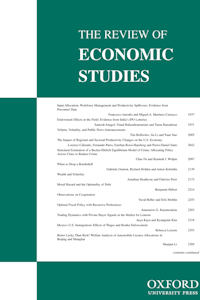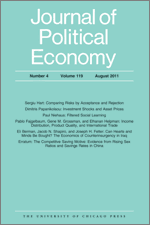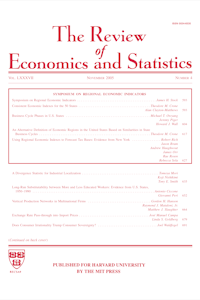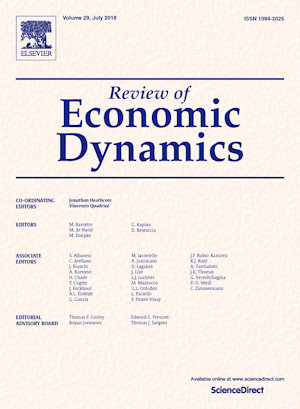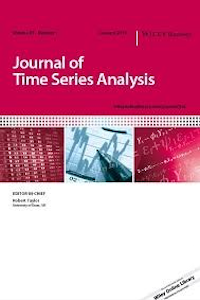
Caivano, M. and Harvey, A. C.
Time series models with an EGB2 conditional distribution
Journal of Time Series Analysis
Vol. 35(6) pp. 558-571 (2014)
Abstract: A time-series model in which the signal is buried in noise that is non-Gaussian may throw up observations that, when judged by the Gaussian yardstick, are outliers. We describe an observation-driven model, based on an exponential generalized beta distribution of the second kind (EGB2), in which the signal is a linear function of past values of the score of the conditional distribution. This specification produces a model that is not only easy to implement but which also facilitates the development of a comprehensive and relatively straightforward theory for the asymptotic distribution of the maximum-likelihood (ML) estimator. Score-driven models of this kind can also be based on conditional t distributions, but whereas these models carry out what, in the robustness literature, is called a soft form of trimming, the EGB2 distribution leads to a soft form of Winsorizing. An exponential general autoregressive conditional heteroscedastic (EGARCH) model based on the EGB2 distribution is also developed. This model complements the score-driven EGARCH model with a conditional t distribution. Finally, dynamic location and scale models are combined and applied to data on the UK rate of inflation.
Keywords: Beta distribution, EGARCH; fat tails; score; robustness; Student's t; Winsorizing
JEL Codes: C22, G17
Author links: Andrew Harvey
Publisher's Link: https://doi.org/10.1111/jtsa.12081 ![]()
Keynes Fund Project(s):
Dynamic Models for Volatility and Heavy Tails (JHLC)
Dynamic Models for Volatility and Heavy Tails (JHLH)
Cambridge Working Paper in Economics Version of Paper: Time series models with an EGB2 conditional distribution, Caivano, M. and Harvey, A. C., (2013)

